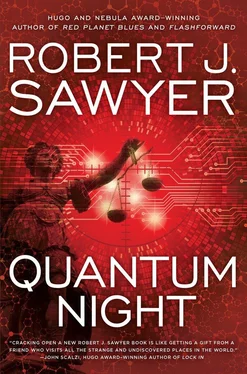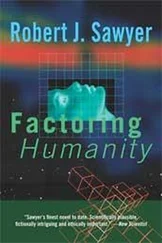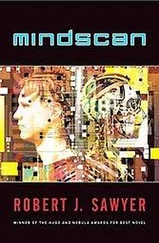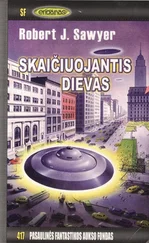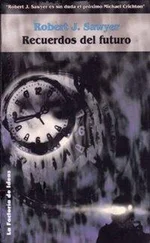“You’re talking about memes,” said Kayla.
I nodded. “I guess I am: ideas that propagate through society. It’s funny that the phrase ‘going viral’ has become synonymous with ‘meme.’ P-zeds of the kind we’re talking about have no conscious defense against ideas, no matter how stupid they are, and so are easily infected by them.”
Kayla nodded. “That would explain the polling-credibility gap. You know how you constantly hear poll results that seem to imply that you are an outlier? You don’t know anyone who believes in creationism, yet the polls say the majority of Americans, at least, do. You don’t know anyone who believes in alien abductions, but the polls say most people do. Maybe those are cases of memes taking over and spreading through the p-zed population. Yes, there may be a little spillover into the Q2 or Q3 levels, but by definition it’s mostly Q1s that are susceptible to that sort of unthinking acceptance.”
“Exactly,” I said. “It’s the whole p-zed playbook: just say or do whatever the guy next to you is saying or doing. And, well, if a Q2 or a Q3 can plant a notion, no matter how abhorrent, it can spread.”
I couldn’t see if Kayla was frowning, but it sounded like she was. “It still seems… I don’t know, a bit pat?”
“Not really,” I said. “René Girard had it right. He argued that humans are basically imitative creatures. We don’t think for ourselves; rather, we just copy what others are doing. He was decades ahead of modern neuroscience. Long before mirror neurons were discovered, he intuited—from his studies of existing cultures and from reading ancient texts—that most of our behavior is imitative—‘psychological mimesis,’ he called it.”
“Wasn’t Girard the guy who talked about societies always finding scapegoats?”
“Exactly, which is more piling-on behavior, everybody converging on the same thought.” I looked out the side window at the flat, dark prairie under a sliver of moon. “We’re all hominidae; we’re all apes. Well, what’s the thing that apes have in common? It’s right there in the name we give to them—to us. Apes? We ape each other; we copy each other. Monkey see, monkey do. Great apes? Damn straight. We excel at imitation.”
Kayla replied, “And we—or the p-zeds, at any rate—copy indiscriminately, without reflection. And if the person they’re copying is a psychopath, then their behavior ends up being de facto psychopathic, too.”
“Exactly what happened in Nazi Germany,” I said. “The average—well, I was going to say the average Joe, but I suppose it was the average Hans over there—wasn’t a bad guy. But he and his fellow countrymen were great at aping, and the people they saw, assholes like Hitler and Himmler and Goebbels and Goering, people who were psychopathic monsters, became, quite literally, their role models. They copied their attitudes, their speech, their practices. Think of the Nuremberg rallies: all the p-zeds falling in line…”
“Just like…”
She trailed off, but I knew what she’d been about to say, and so I said it for her: “Just like my grandfather.” Of course, if he really had been Ernst the Enforcer, I suppose he was more likely a Q2—one of the hubs, like Devin Becker, around whom p-zeds clustered, the carcinogen that caused a mob of Q1s to metastasize.
I stared through the windshield, the lights of Regina smoldering ahead.
* * *
Five hundred kilometers…
We hit Regina around 10:30 P.M. By that point, we were exhausted, and I think we both looked wistfully at the motels flashing past as we entered the city. But Kayla had to be at work the next day, and so, after a brief stop for coffee and donuts to keep our blood sugar up, I took over the driving and got us the rest of the way to Saskatoon. Kayla’s daughter, Ryan, was staying over at Kayla’s mother’s place, and—
And it was late, and, despite all our progress, Kayla did seem skittish being alone in her house with me, and so I said, “The couch looks great,” and I stretched out on it, put on the white-noise app on my iPhone, and was asleep within minutes.
But, for once, I had very nice dreams.
* * *
Kayla and I made it to the Canadian Light Source a little after 9:00 A.M. I was amused to note that its street address, on the University of Saskatchewan campus, was 44 Innovation Boulevard; I suspect the other occupants of that street were hard-pressed to match the sort of things Kayla described as she gave me a tour. “A synchrotron,” she said as we walked along, “is an amazingly versatile tool; it’s the Swiss Army knife of particle accelerators. You can tune its output to do almost anything, adjusting energy range, wavelength, resolution, photon brightness, and beam size. The researchers here do work in fundamental physics, archeology, geology, botany, new fuel sources, materials science—you name it.”
“And you said you tested your brother here? Was that unusual—a human subject?”
“It used to be, but now we often treat people here. One of the beamlines is called BMIT—that stands for Biomedical Imaging and Therapy.”
The synchrotron’s giant storage ring was in a vast square pit, surrounded on three sides by indoor balconies. The inner side of each balcony looked down on the ring; the outer side had doors leading into offices and labs. As we walked along, Kayla pointed out the various beamlines—straight projections at oblique angles coming off the ring. She must be used to the constant mechanical roar coming from below, but it was giving me a headache.
“Hey, Kayla,” said a sandy-haired man approaching us; he was wearing a loud Hawaiian shirt. “Welcome back.”
She smiled warmly. “Hi, Jeff.”
“How was Manitoba?”
She glanced at me. “Enlightening.”
Jeff looked amused. “Don’t forget those budget reports, okay?”
“Yeah, sure,” Kayla replied.
“Who’s that?” I said, after he’d walked on.
“Oh, sorry. That’s Jeff Cutler; he’s the acting director.”
“Like Clint Eastwood?”
“What? Oh. Ha-ha.”
“He always dress like that?”
“Actually, yes.” Kayla pointed across the great expanse of the synchrotron to the balcony on the opposite side. “People have to find him all the time; the Hawaiian shirts make him easy to spot. Vic has her own variation on that; she always wears black, head to toe, and—see! That’s her, over on the other side.”
“You spotted her; how can she spot you?”
“Easy,” said Kayla. “I’m the one who always has a cute guy in tow.” She winked, and we headed around two more sides of the square. Victoria was walking and texting; we got quite close before she looked up. “Hey, Kay,” she said, smiling.
“Vic, this is Jim Marchuk.” Vic traded a look with Kayla—a suppressed grin. Evidently there’d been some discussion about whether Kayla would look up her old boyfriend when she went to Winnipeg. “And Jim, this is Dr. Victoria Chen.”
“Hello, Jim,” Vic said. “I’ve heard a lot about you.”
I gave the automatic “All good, I hope” response, and saw, in a quirking of Vic’s mouth, that it in fact hadn’t all been good; of course Kayla had told her friend about how it’d gone south all those years ago.
“You guys all ready?” Vic said. “We’re lucky today; I get the beamline while the sun’s still up.” She glanced at the phone she was holding. “My beamtime starts in four minutes.”
“Great,” said Kayla. Victoria turned around and began walking briskly. I was amused to see that she was using her hexagonal dosimeter as a hair clip to hold her long black hair in place. Kayla fell in beside her, and they chatted physics as we went along. I kept looking down at the bustling activity in the pit; it reminded me of Fritz Lang’s Metropolis.
Читать дальше
